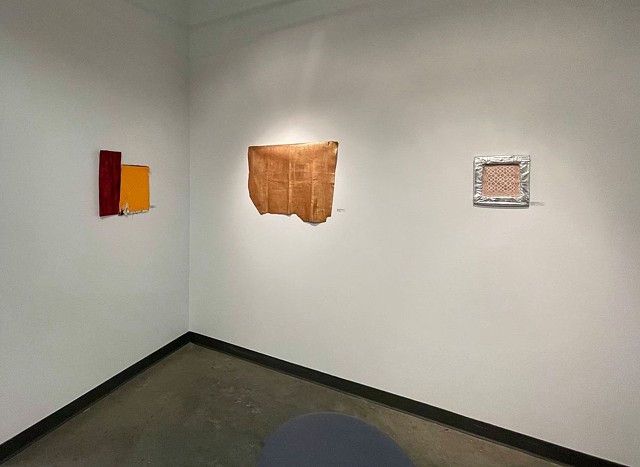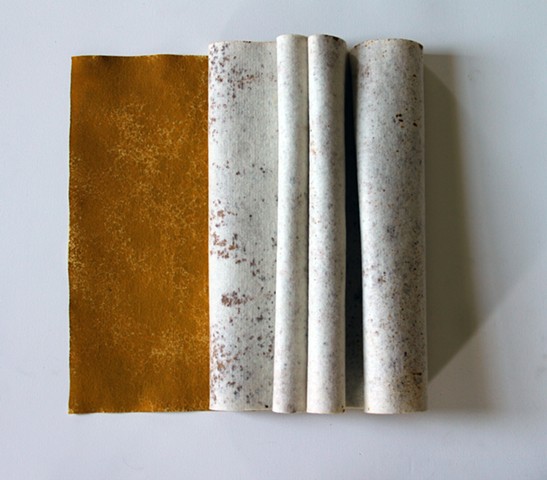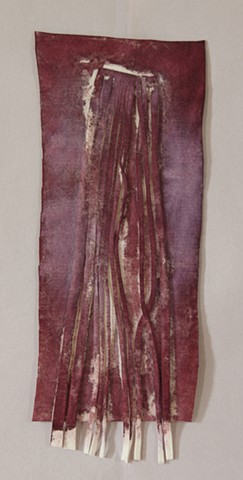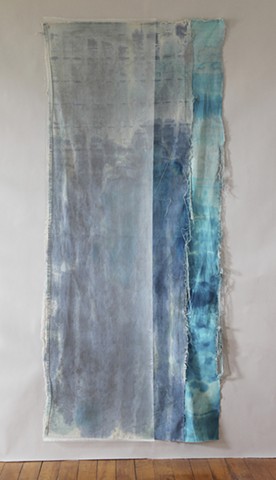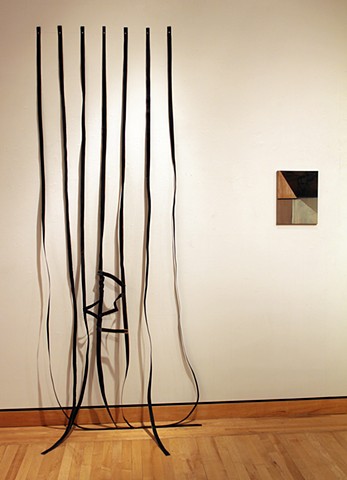Linguistic Relativity
I use time, perception and the lyrical inherent properties of materials to question the boundaries of painting, sculpture, drawing and photography. I raise questions about how we comprehend and perceive information.
These works are concerned with exploring the idea of linguistic relativity-the inability to perceive something because the word for it does not exist.
The ancient Greeks used a palette of only five colors - black, white, yellow and red, and the metallic. My newest imagery is drawn out of the assumption that our perception is the construction of our universe. What might such a universe look like with limited ability to name the world or name it differently than we do now? How can a shape or color conjure sensation and thought? Titles are derived from musing on how I might respond to this set of constraints in Homer’s time, and then creating works from this set of limitations. There is seemingly no mention of the word blue in either The Odyssey or The Iliad. Homer’s reference to the “wine-dark sea” has puzzled scholars for ages. As an example, the adjective we see used in Serbo-Croatian for the sea is plav (the color blue). However, the same word is used for blonde hair - the word perhaps suggesting light as a phenomenon rather than an actual color? How so to create a physical work which can evoke the sensation of blue, not just the color?
Fabric and the surface of painting is manipulated; the use of traditional painting or sculpture materials, such as aluminum mesh or canvas, is questioned and put to a new purpose or test, examining the boundaries of my own response and the medium itself. A painterly gesture may pose as the illusion of a sculpture on a traditional drawing surface.
This particular work is concerned with the ways in which I salvage some of the familiar aspects of historical reference or literature and find ways in which to transform them into a tangible experience. These types of cultural information tend to be resistant to illustrate anything that can actually be depicted. However, at the same time, they carry many cultural connotations and meanings for us. One might assume that language has the capacity to be a specialized form of codifying space, one of my ongoing pictorial concerns. Depending on the knowledge that one brings to the poem, reference or story, different levels of understanding are accessible to the viewer. My works are not maps, but use increasingly complex systems as an initial reference point. I take information about reality and translate it in much the same way as a mapmaker would; but my purpose lies in a translation process that is not utilitarian but poetic and questioning.
